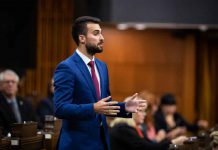“This is great news for First Nation families and their children” – Bob Nault
KENORA – Education – The Honourable Bob Nault, Member of Parliament (Kenora riding) released the following statement in support of the new policy and funding approach to First Nations K-12 education on-reserve:
“Every child deserves access to a high-quality education, regardless of where they live or what province they live in. First Nations children in the Kenora riding, and across Canada, are no exception. Education provided on-reserve must meet the community’s unique needs and deliver culturally appropriate programming, while also providing sufficient language supports.”
The new co-developed policy and improved funding approach will take effect on April 1, 2019. The new funding approach will:
- replace outdated proposal-based programs with improved access to predictable core funding;
- ensure base funding is comparable to provincial systems across the country while working towards additional funding agreements based on the need to better account for factors such as remoteness, school size, language, and socio-economic conditions;
- provide First Nations schools with $1,500 per student, per year, to support language and culture programming;
- provide new resources which will support full-time kindergarten in every First Nations school for children aged four and five; and
- ensure special education funding is more predictable, with fewer application-based requirements.
“As we move forward on the path to reconciliation, it is important that our First Nations lead the way in mapping out their own future. This new education approach is a very good step in the right direction that will encourage First Nations to implement their own models of education.”
Quick facts
- Budget 2016 included an additional $2.6 billion over five years for elementary and secondary education. Since then, total funding for education on-reserve has increased by more than 30%, and will continue to increase through 2020-2021.
- The new formula-based core funding model for elementary and secondary education will be data-driven and responsive to student population growth and education cost pressures.
- The new formula-based funding methodology will be more understandable for recipients and informed by ongoing technical discussions.
- With the new approach, two proposal-based funding streams, representing $360 million, will be rolled into core funding, reducing the administrative burden.
Related products







